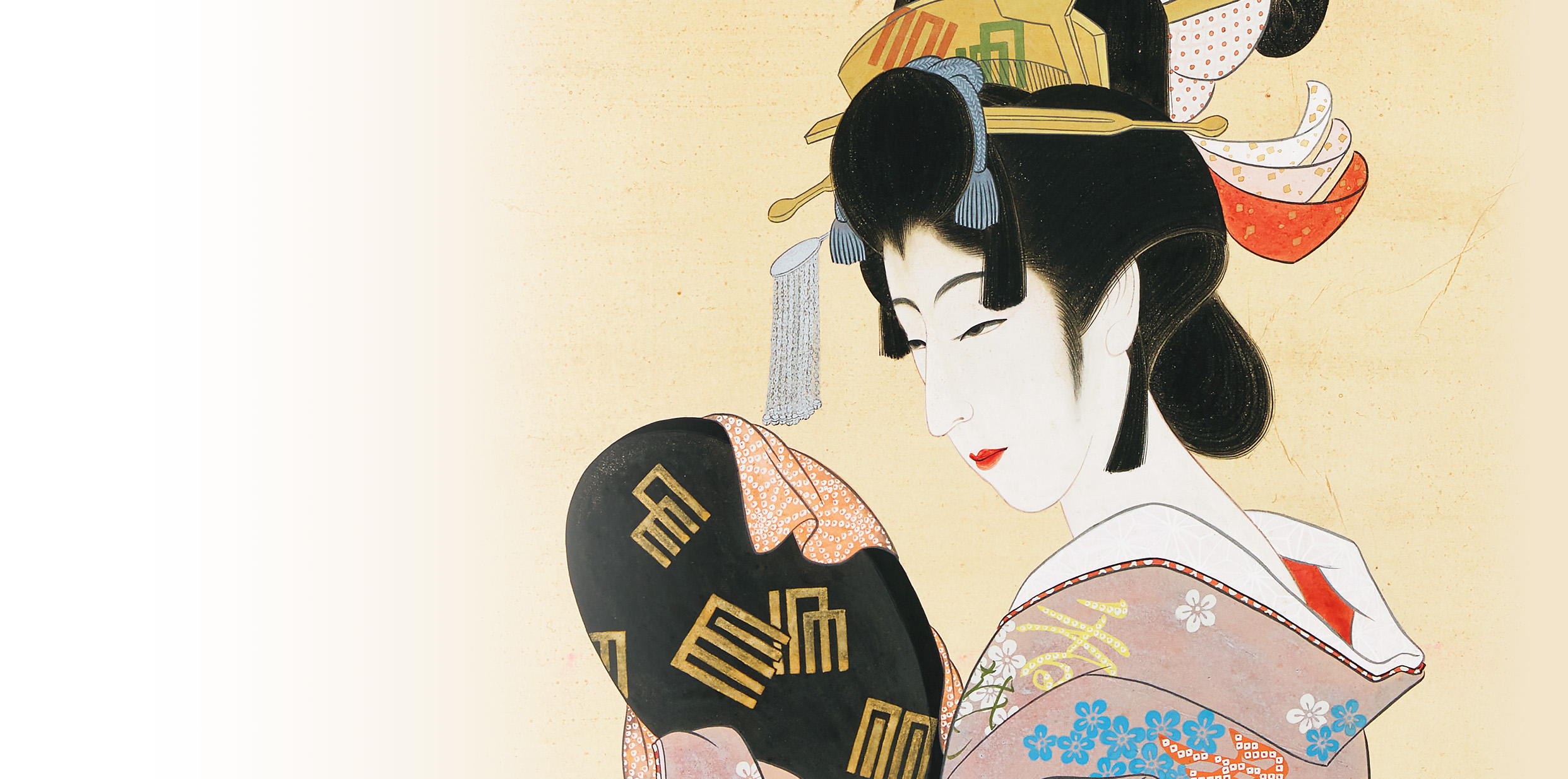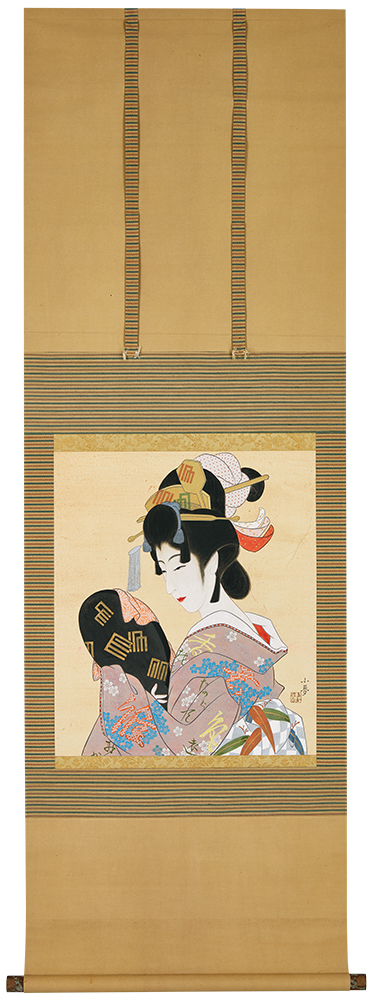vol.11 Tachibana Sayume, Beauty
The first time I saw Tachibana Sayume’s work was when I was researching kabuki at university. It was a lithograph by Sawamura Tanosuke, a legendary kabuki actor who was active from the end of the Tokugawa shogunate to the Meiji Period, and although the people and their clothes depicted in it were Japanese, they were very fashionable and Art Nouveau-like. I remember Sawamura Tanosuke as a very mysterious figure – bewitching, androgynous and almost other.
This work was also shown at an exhibition at the Shoto Museum of Art in Shibuya, titled “The Power of Clothing; History of Cross-Dressing in Japan.”
I thought that Tachibana Sayume was an artist with a charming and modern style, so I was a little surprised at how this bijin-ga was painted, colored and composed in a very Japanese manner.
I was not aware of the range of Sayume’s works, but he learned Western-style painting from Kuroda Seiki and Japanese painting from Kawabata Gyokusho!
With this work, he renders a woman in a colorful kimono and gorgeous hair ornaments. I was especially drawn to the trinkets.
Seen closely, the lacquer mirror, the comb and kanzashi with their matching “genjiko” patterns seem quite large, but I was particularly interested in the kanzashi that holds the comb down, to about the size of a rice pad. Was there really such a big kanzashi? Or was it painted with Sayume’s signature stylization in order to have the same size genjiko pattern as the mirror?
I think this woman’s hairstyle is probably called “yuiwata”. It was a hairstyle that was popular from the end of the Tokugawa shogunate to the beginning of the Meiji period amongst unmarried women. The shimada (hairstyle) is set with a kanoko shibori (cloth dyed in a dapple pattern) called tegara, and a hair ornament layered in white, pink and red made of Japanese paper called inazuma. In the case of really young girls, I often pick a red kanoko shibori. Placed before a white blackground, I feel that a red kanoko shibori and light blue tassels for a fringe leaves, both, a youthful and mature impression.
In Japanese paintings, I always find joy in thinking and guessing about the age and generation figures are from their hairstyles, accessories and clothes.
I have little knowledge about waka poems and could not identify the poem drawn on the kimono, but judging by the pattern of the plum blossoms, I wonder if it is a poem by Ki no Tamonori.
Mademoiselle Yulia
Mademoiselle Yulia rose to prominence as a DJ and singer in her teens. In recent years, she has grown widely active as a kimono stylist, model, columnist, awards judge, and has become the face of numerous global campaigns of widely known brands. Yulia graduated from Kyoto University of the Arts in 2020 and styled the visual campaign for the Victoria & Albert Museum’s exhibition, Kimono -Kyoto to Catwalk-.
https://yulia.tokyo/



